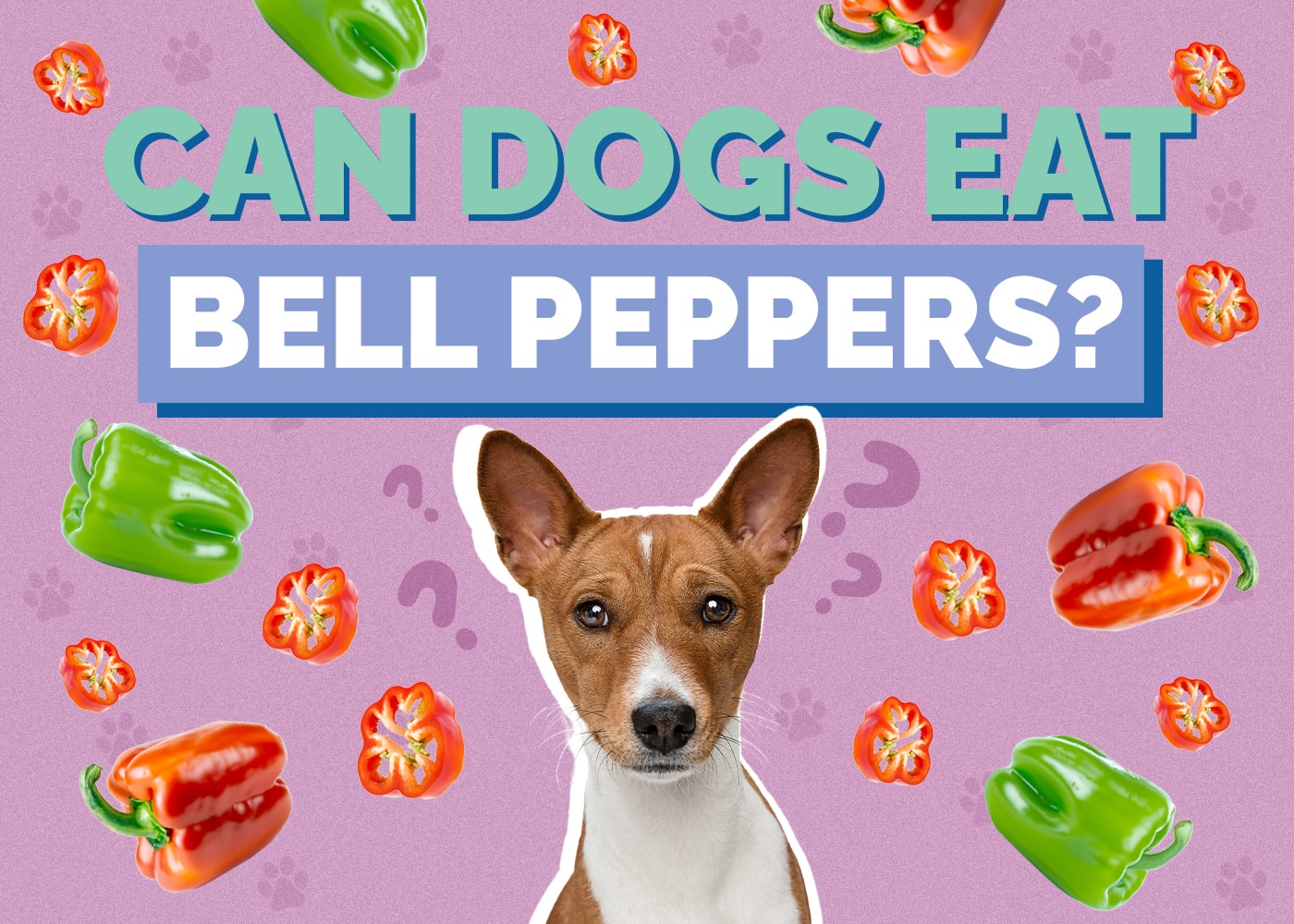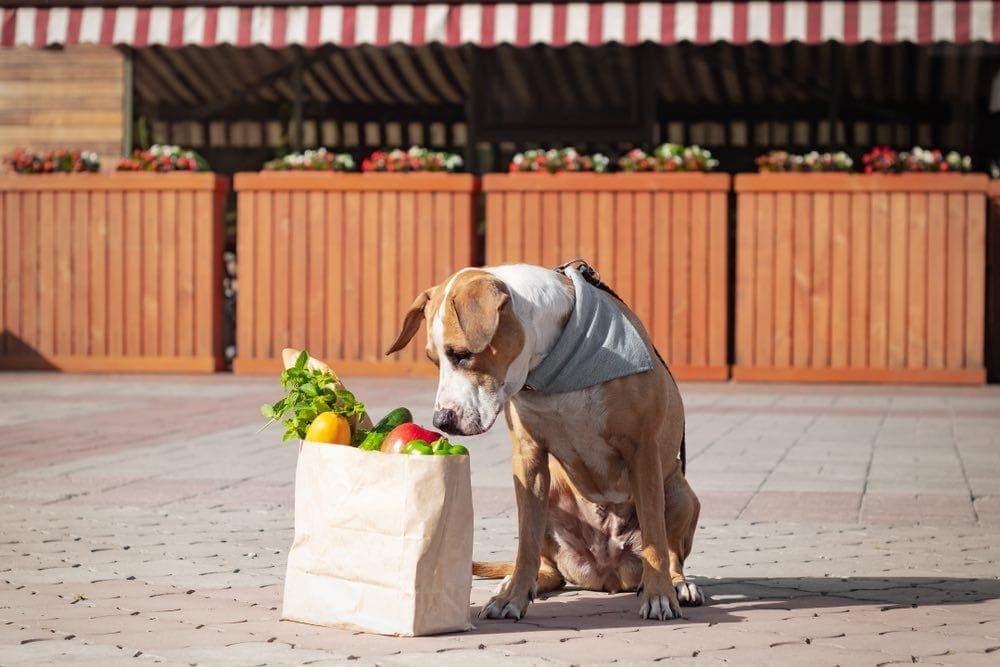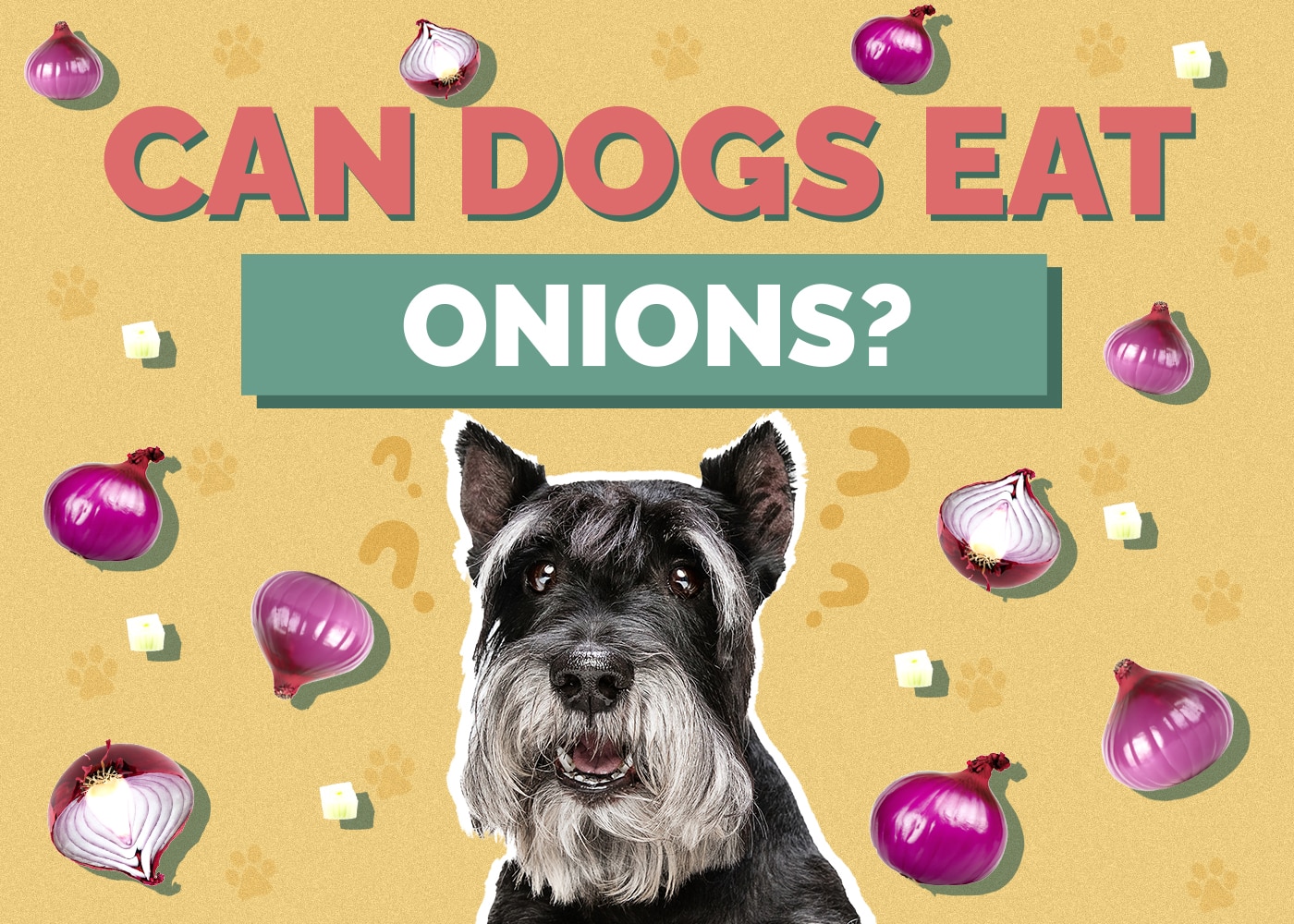Can Dogs Eat Bell Peppers? (Red, Yellow, or Green)

Updated on

If you’re a dog owner, you probably already know that dogs will eat just about anything. If a food drops on the floor, your dog is likely to be right there and ready to pick it up. But not everything we eat as humans is good for dogs.
Even some of the healthy foods that us humans eat aren’t safe for dogs to eat, such as garlic. So, are bell peppers safe for dogs? We’ve done the research and have found that sweet bell peppers of all colors are safe to feed dogs, albeit with exceptions. Here’s what you need to know.
The Health Benefits of Bell Peppers for Dogs
Dogs can benefit from the vitamins, minerals, phytonutrients, and antioxidants in bell peppers. Sweet peppers also contain essential nutrients, such as vitamins A, B6, and C and beta carotene.
These nutrients are known to help keep a dog’s immune system strong and can improve the health of their nails, teeth, and coat.1 Sweet bell peppers of all colors have nutritional benefits, but the red ones are powerhouses of nutrition that owners should consider feeding themselves and their dogs above other color options.
Red peppers have been on the vine longer than green, yellow, or orange peppers, which means they have more time to absorb nutrients from their environment. But don’t let color dictate whether to share a few slices of bell pepper with your dog. They all contain fiber, water, and nutrients that your dogs will benefit from overall.

The Exceptions to Keep in Mind
Sweet bell peppers and red peppers are safe for dogs to eat. But the same can’t necessarily be said for spicy peppers. Dogs can eat a little bit of a spicy pepper without experiencing any side effects. But spicy peppers contain a compound called capsaicin that can irritate a dog’s digestive system. If a dog eats too much of a spicy pepper, they may experience symptoms like diarrhea, indigestion, and dehydration. Therefore, it’s a good idea to stick with the sweet stuff and avoid feeding your dog any spicy peppers.
Bell pepper skins can also be tough for dogs to digest. Feeding them just a slice or two shouldn’t cause any problems. But if you plan to add half a bell pepper to your dog’s food, consider steaming the pepper first. This will soften the skin up and make the food easier for your dog to digest overall. You should never feed your dog any peppers that have been cooked with garlic, onions, or spices, so keep the fajitas to yourself and focus on plain peppers for your dog.

Serving Suggestions
Many dogs will happily eat bell pepper raw, but some aren’t so keen on the idea. If you’re trying to feed your dog bell pepper to improve their health and replace less healthy treats, you may have to try a few different serving ideas before you find one that your dog actually enjoys:
- Sauté a few slices of bell pepper with a little fish or chicken for a filling yet healthy mini-meal or snack.
- Cover chunks of bell pepper in peanut butter, and offer the chunks as rewards during training sessions.
- Finely dice bell pepper, and add it into your dog’s wet or dry food at mealtime.
Your dog may even have a color preference when it comes to bell peppers. After all, they do have slightly different textures and flavors. So, give every color a try and see which your pooch seems to like the best.
Final Thoughts
We think bell peppers are awesome! They’re tasty and full of nutrition and add tons of lively color to any dish. But your dog may or may not feel the same way. The best way to know whether bell peppers are right for your dog’s diet is to start offering them one. They’ll either take to it right away or after a few feeding attempts, or they’ll simply decline every offer you make them.
Let your dog decide for themselves whether to eat bell peppers! There are many other low calorie and high nutrient snacks that you can offer your dog instead, such as carrots and bananas. What do you think about feeding bell peppers to dogs? Let us know your opinion below.
See Also:
Featured Image Credit: Pickpik











